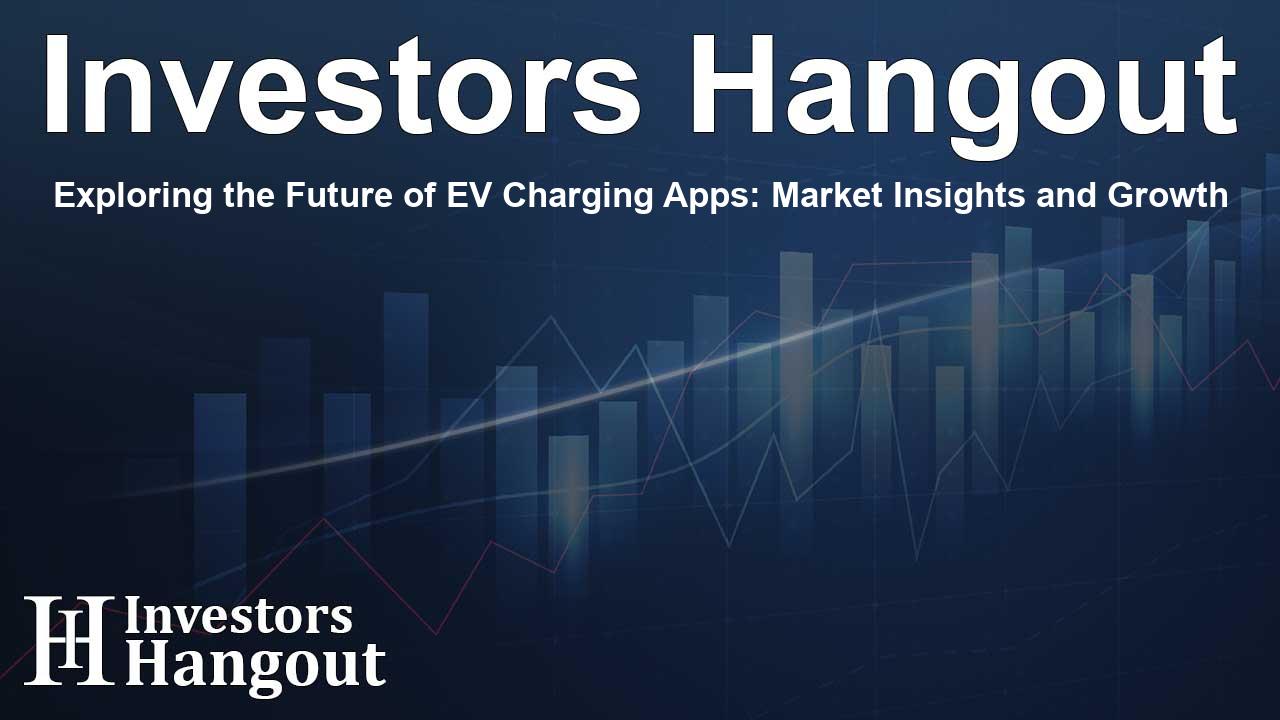Exploring the Future of EV Charging Apps: Market Insights and Growth

Understanding the EV Charging App Market Dynamics
The global EV Charging App market is on an impressive growth trajectory, expected to skyrocket from USD 13.14 billion in 2024 to approximately USD 137.77 billion by 2031. This impressive increase reflects a compound annual growth rate (CAGR) of about 40.5%, fueled by advancements in digital mobility and the integration of smart energy solutions.
Key Forces Driving Market Expansion
The EV Charging App industry is experiencing a major transformation, with electric mobility becoming a fundamental aspect of everyday transportation. As drivers increasingly seek convenient and efficient charging solutions, these applications have become essential. They connect users to charging infrastructures, streamline payments, and optimize charging locations, influencing the market significantly.
The Importance of User-Centric Experiences
Today’s EV charging apps are no longer just tools but key players that enhance the overall driver experience. Government incentives, heightened consumer interest, and collaborative efforts among different sectors are rapidly advancing the landscape, positioning these applications as vital resources in the electrification of transport.
Trends Impacting the EV Charging App Market
One of the most notable trends shaping growth is the rise of DC (Direct Current) charging. This method enables faster and more reliable charging experiences, crucial for drivers aiming to minimize downtime. Users can easily locate compatible stations and monitor charging progress in real-time, making it indispensable for electric vehicle (EV) drivers.
AC Charging and Its Role
On the other hand, AC (Alternating Current) charging remains a cornerstone of user accessibility and affordability. Apps that optimize this type of charging provide features like scheduling and consumption monitoring, which cater to everyday users and businesses alike, enhancing the appeal and utility of these platforms.
Electric Vehicle Types and Charging Apps
Battery Electric Vehicles (BEVs) are the most prominent category in electric mobility and they heavily rely on charging applications. As the adoption of BEVs rises, the importance of these apps in locating stations and optimizing charging schedules becomes increasingly apparent. They enhance driver confidence and ensure a smoother driving experience, serving as crucial aids to daily routes.
The Influence of Government Initiatives
Government policies are paramount in driving the EV Charging App market forward, with regulations promoting infrastructure growth and transparent pricing. Incentives for charging setup installation and policies demanding interoperability among providers foster a more cooperative environment for app development, leading to broader market access and increased user participation.
Consumer Preferences and the Corporate Sector's Influence
Today's consumers desire personalized, intuitive charging experiences, pushing developers to create apps that meet these expectations. Likewise, corporate fleets are contributing significantly to market growth, as businesses transition to electric vehicles and rely on apps for efficient fleet management.
Embracing Smart Energy Integration
Smart energy integration is another vital aspect facilitating market propagation, aligning charging behavior with energy management strategies. Users can optimize their energy consumption through these applications, promoting the adoption of greener practices and enhancing energy efficiency.
Payment Systems and Trust in Charging Apps
Payment ecosystems within EV charging apps must foster user confidence through seamless transaction processes. Integrating features like digital wallets and subscription models adds value for both consumers and operators, completing the charge-and-pay cycle.
Future Outlook of the EV Charging App Market
As innovations continue to reshape the EV Charging App market landscape, the focus remains on improving user experiences and integrating sustainable solutions. These apps will evolve from options to necessities as electric mobility becomes a mainstream facet of global transportation.
Frequently Asked Questions
What is the expected market size for the EV Charging App market by 2031?
The market is projected to reach approximately USD 137.77 billion by 2031.
What is driving the growth of the EV Charging App market?
Key factors include rising consumer demand for electric vehicles and the integration of technology in charging solutions.
How do DC and AC charging impact the market?
DC charging offers fast solutions, while AC charging enhances accessibility and affordability for residential users.
What role do government policies play in this market?
Government initiatives promote infrastructure growth, ensuring broader access and adoption of electric vehicles.
How important is consumer feedback in app development?
Consumer preferences significantly shape app features and functionalities, emphasizing the need for user-friendly experiences.
About The Author
Contact Dominic Sanders privately here. Or send an email with ATTN: Dominic Sanders as the subject to contact@investorshangout.com.
About Investors Hangout
Investors Hangout is a leading online stock forum for financial discussion and learning, offering a wide range of free tools and resources. It draws in traders of all levels, who exchange market knowledge, investigate trading tactics, and keep an eye on industry developments in real time. Featuring financial articles, stock message boards, quotes, charts, company profiles, and live news updates. Through cooperative learning and a wealth of informational resources, it helps users from novices creating their first portfolios to experts honing their techniques. Join Investors Hangout today: https://investorshangout.com/
The content of this article is based on factual, publicly available information and does not represent legal, financial, or investment advice. Investors Hangout does not offer financial advice, and the author is not a licensed financial advisor. Consult a qualified advisor before making any financial or investment decisions based on this article. This article should not be considered advice to purchase, sell, or hold any securities or other investments. If any of the material provided here is inaccurate, please contact us for corrections.
